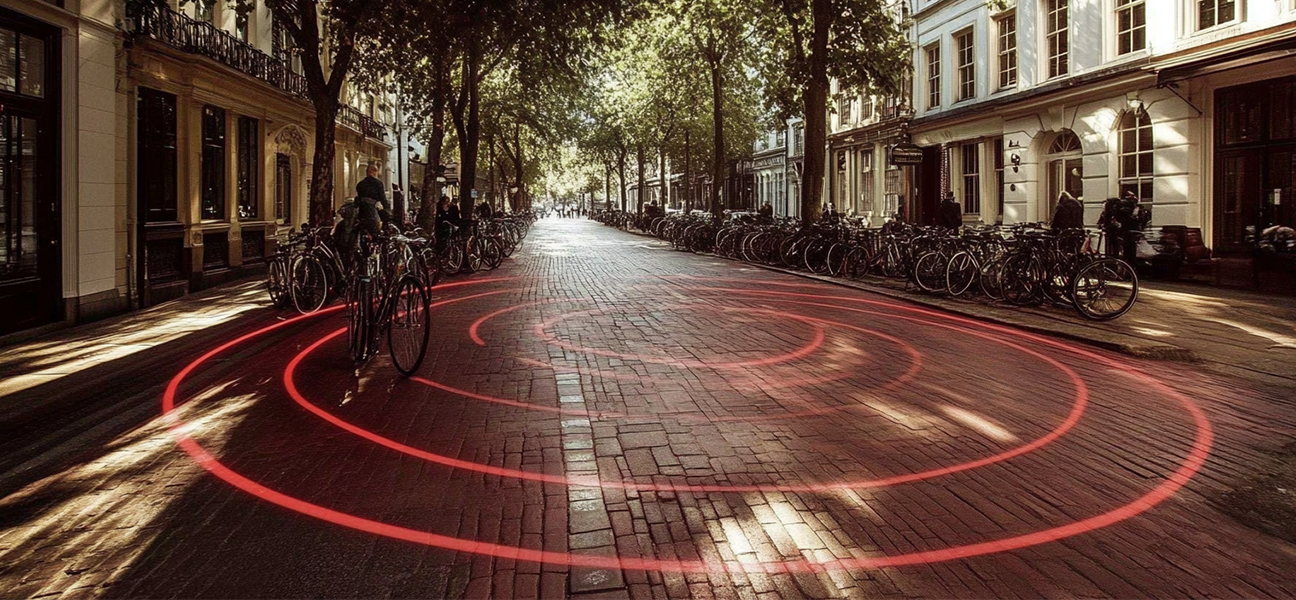
Cycling is often hailed as one of the most eco-friendly modes of transportation, but what if the bikes themselves could be even greener? Enter circular design—a philosophy that’s not just about making things last longer but about designing products with their entire lifecycle in mind. From conception to recycling, circular design ensures that every step minimizes waste, maximizes repairability, and makes our products kinder to the planet.
At Le Velo Studio, we’ve embraced this approach to transform the way we think about bike production. Our focus on circular design is about more than just reducing waste—it’s about creating bikes that riders can love for years, knowing they’re making a positive environmental impact. Let’s dive into what circular design means, why it’s essential for the future of cycling, and how it’s shaping the bikes of tomorrow.
The traditional model of product design follows a linear path: extract materials, manufacture, sell, use, and discard. It’s a straight line that leads from creation to disposal, with each step contributing to waste. Circular design, on the other hand, closes the loop. Instead of thinking in terms of “use and toss,” we consider how a product can be repaired, reused, and ultimately recycled back into the system.
This model requires a fundamental shift in how we approach product development. For bicycles, it means creating frames, components, and accessories that are built to last but also easy to repair. It’s not enough to craft a durable bike—what happens when it breaks down, or a part becomes obsolete? Circular design answers these questions by ensuring the entire product lifecycle, from material sourcing to end-of-life, is part of the sustainability equation.
So, why is circular design the future? Because it challenges the “throwaway culture” we’ve grown accustomed to and pushes us toward a more thoughtful, sustainable approach. Instead of focusing on short-term gains, circular design encourages manufacturers to think long-term, creating products that stay in use for as long as possible, reducing both waste and resource consumption.
Cycling has long been viewed as an environmentally friendly mode of transportation, but when you break it down, bikes aren’t immune to the pitfalls of traditional manufacturing. Many bikes are designed with proprietary parts that are difficult to replace, and once a bike reaches the end of its useful life, it often ends up in a landfill. Even worse, the manufacturing process can still involve energy-intensive methods and materials that harm the environment.
That’s where circular design comes in. By designing bikes with longevity and repairability in mind, we’re making it easier for riders to keep their bikes on the road for longer—and out of the landfill. Le Velo Studio is proud to be at the forefront of this movement, ensuring that every aspect of our bikes, from the frame to the smallest component, is designed with circular principles in mind.
Here’s how we’re doing it:

At its core, circular design is about creating a system that benefits everyone, including the rider. But it’s not just the manufacturers who need to think sustainably—riders play a crucial role in keeping the cycle going. Circular design thrives on a “repair, not replace” mindset, encouraging cyclists to take care of their bikes and opt for repairs over new purchases whenever possible.
Maintaining your bike doesn’t just save you money—it reduces your environmental footprint. Regular maintenance, such as cleaning your drivetrain, checking tire pressure, and replacing worn components, can significantly extend the life of your bike. And when repairs are needed, circularly designed bikes like those at Le Velo Studio make it easy to find and replace parts, keeping your bike on the road and out of the scrapyard.
As more riders embrace this mindset, we can collectively reduce the demand for new materials and the environmental impact of bike production. And that’s a win-win for both cyclists and the planet.
In many industries, “fast fashion” has become a dirty phrase, symbolizing a cycle of overproduction, waste, and environmental harm. Unfortunately, cycling isn’t immune to this trend. Every year, manufacturers release new bike models, often with minor updates or aesthetic changes, encouraging consumers to trade in their old bikes for the latest version. It’s a cycle of consumption that fuels waste and resource depletion.
Circular design offers a different path. Instead of chasing the latest trends, circularly designed bikes are built to last, with timeless aesthetics that don’t go out of style. At Le Velo Studio, we’ve intentionally designed our bikes to be both functional and beautiful, drawing inspiration from the classic lines of Art Deco while integrating modern technology and sustainable materials.
By rejecting the fast-fashion mentality, we’re creating bikes that riders can be proud of for years to come. Our bikes aren’t just tools—they’re companions for your journey, whether that’s a daily commute or an epic adventure. And because they’re built to last, you’ll be riding with the confidence that your bike is as sustainable as it is stylish.
As we look toward the future, it’s clear that the traditional linear model of consumption and waste is no longer sustainable. Circular design offers a way forward, not just for cycling but for industries across the board. By creating products that are built to last, easy to repair, and recyclable, we’re reducing the environmental impact of manufacturing and empowering consumers to make more sustainable choices.
At Le Velo Studio, we’re proud to be part of this movement. Our commitment to circular design is about more than just building great bikes—it’s about building a better future for cyclists and the planet alike. Whether you’re commuting to work, tackling a gravel trail, or just enjoying a weekend ride, you can do so knowing that your bike is part of the solution, not the problem.
So, the next time you hop on your bike, take a moment to appreciate the journey it’s been on—and the journey it still has to go. Because with circular design, the ride never really ends.